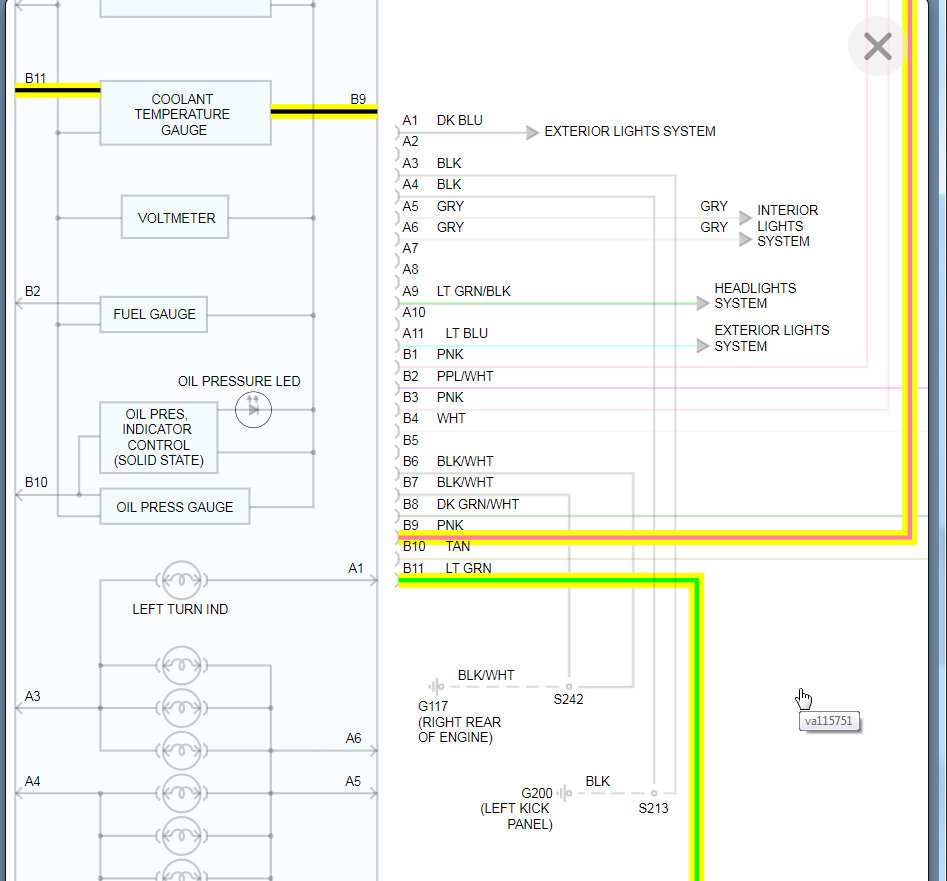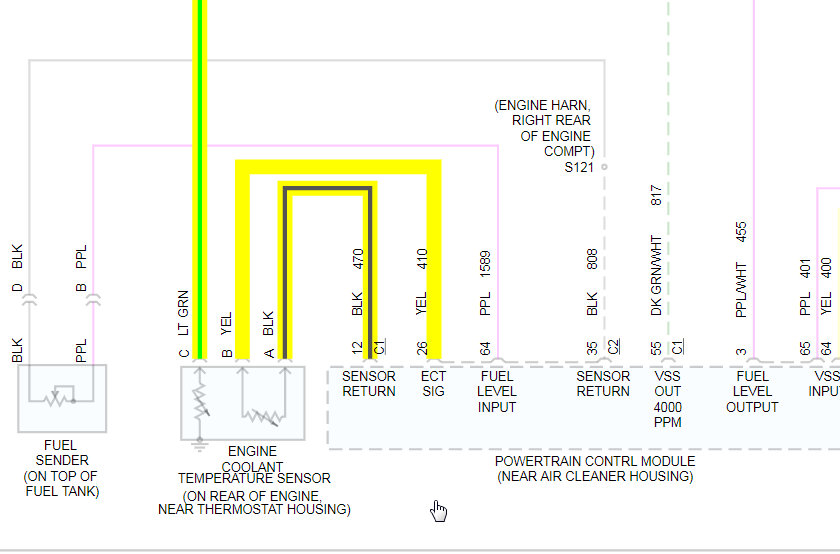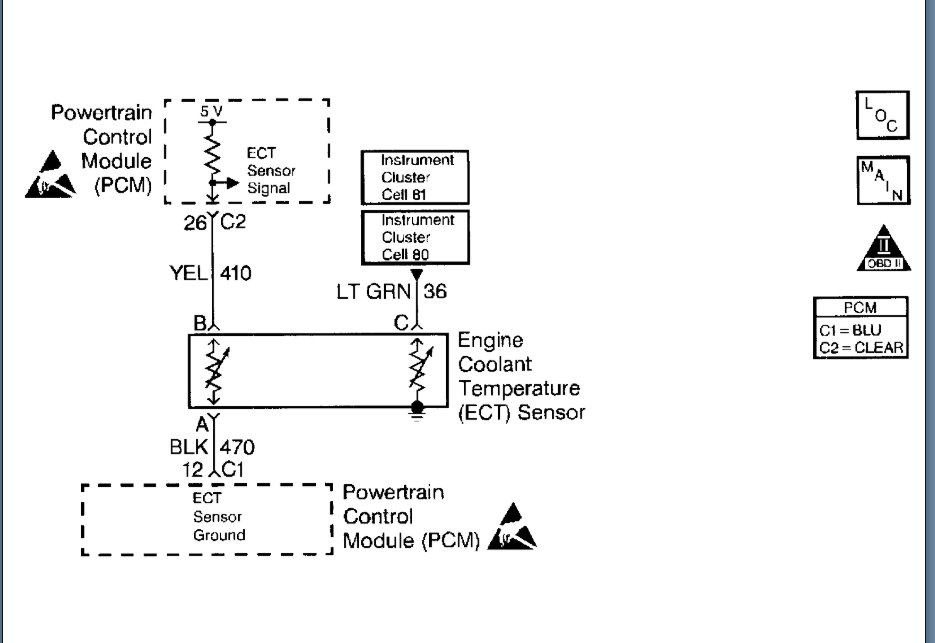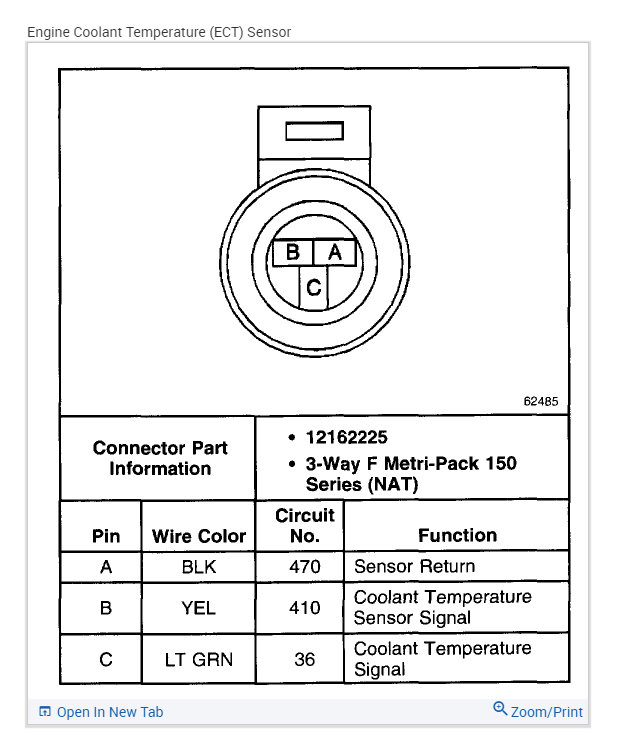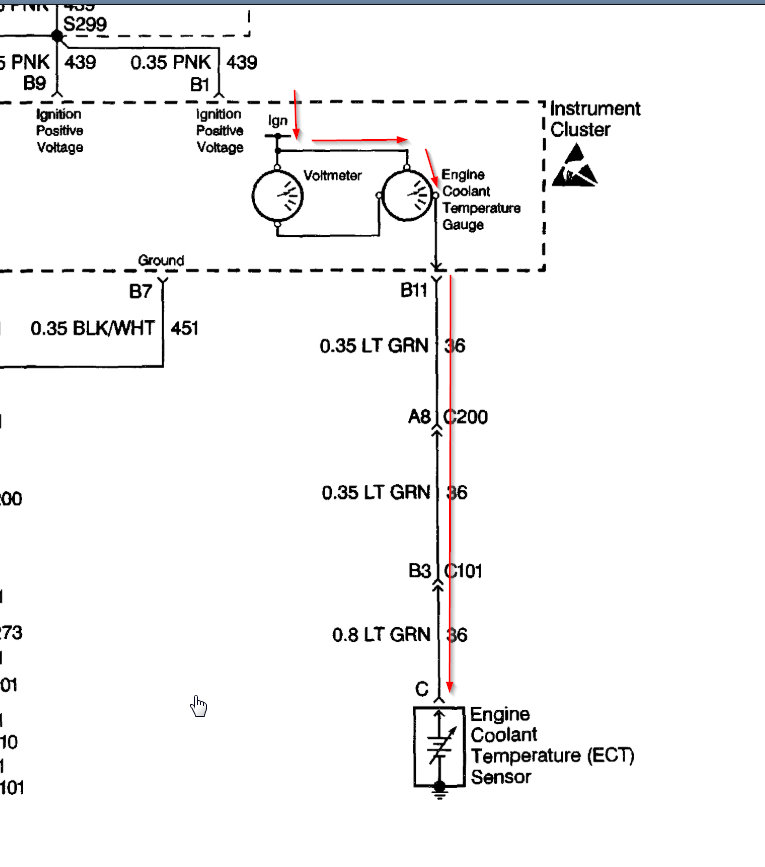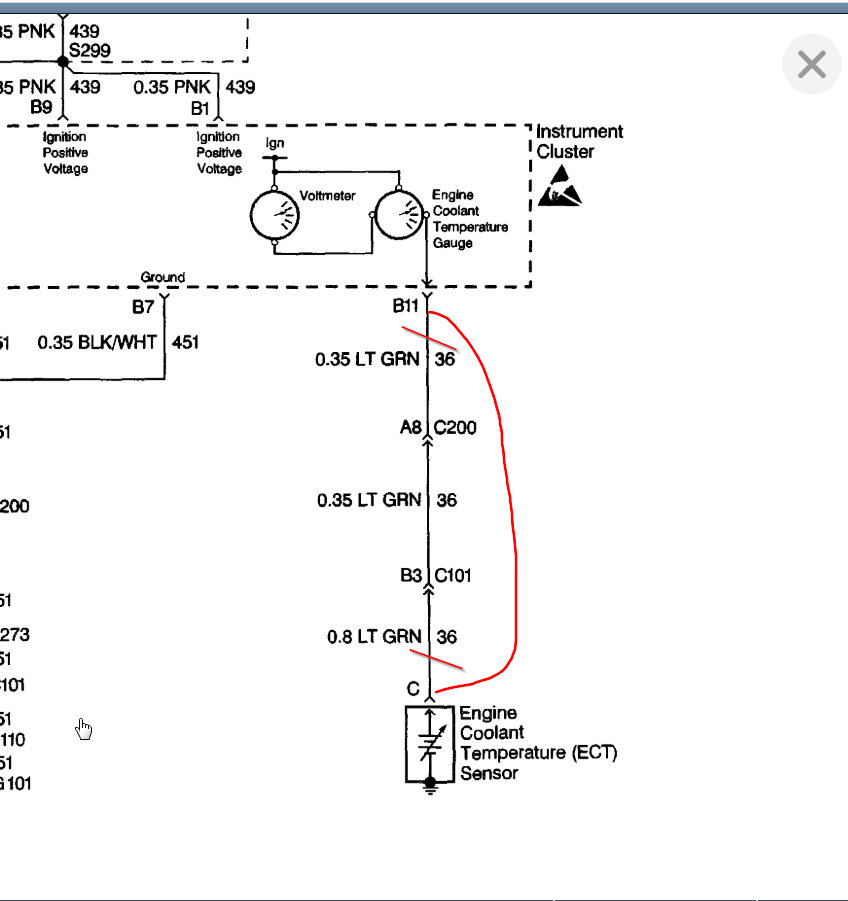Based on all this my current thought is the cluster is shorted or this circuit is shorted. Here is why:
The way this works is the cluster is supplied 12 volts through the PCM fuse. However, the ground for the coolant temperature gauge is past the sensor. This means between the 12 volt source and ground is a resistor. Based on the temperature of the coolant the resistor varies its resistance which will increase or decrease the voltage that the gauge is reading.
Taking a step back, remember that a load in a circuit will use all available current except for just enough to get back to ground. This means the gauge will use 12 volts when resistance is low and will have the needle high in the scale. When resistance is high the gauge will use less voltage because it needs more to get past the resistance and return to ground.
Applying that to this circuit, when the coolant is cold, the resistance is high as you found, this means the gauge is not able to use all 12 volts and the needle should be low on the gauge. As the resistance decreases because the coolant is heating up, the gauge is able to use that amount of voltage due to the lower resistance and the needle will rise.
However, your gauge is always reading 12 volts. So where is that 12 volts coming from or where is it finding another path to ground so it does not go through the resistor? Remember current is going to find the easiest path to ground.
So if it were me, I would go to the back of the cluster and cut the wire coming directly out of the cluster. Then run a new wire directly to the temp sensor and retest. If the wire is okay then the short has to be inside the cluster on the ground side of the gauge. If it were before the gauge then the gauge would read low all the time.
Let me know if this makes sense. I know you said you inspected the wire but running a new one is much more definitive.
Image (Click to make bigger)
Friday, April 2nd, 2021 AT 11:04 AM
